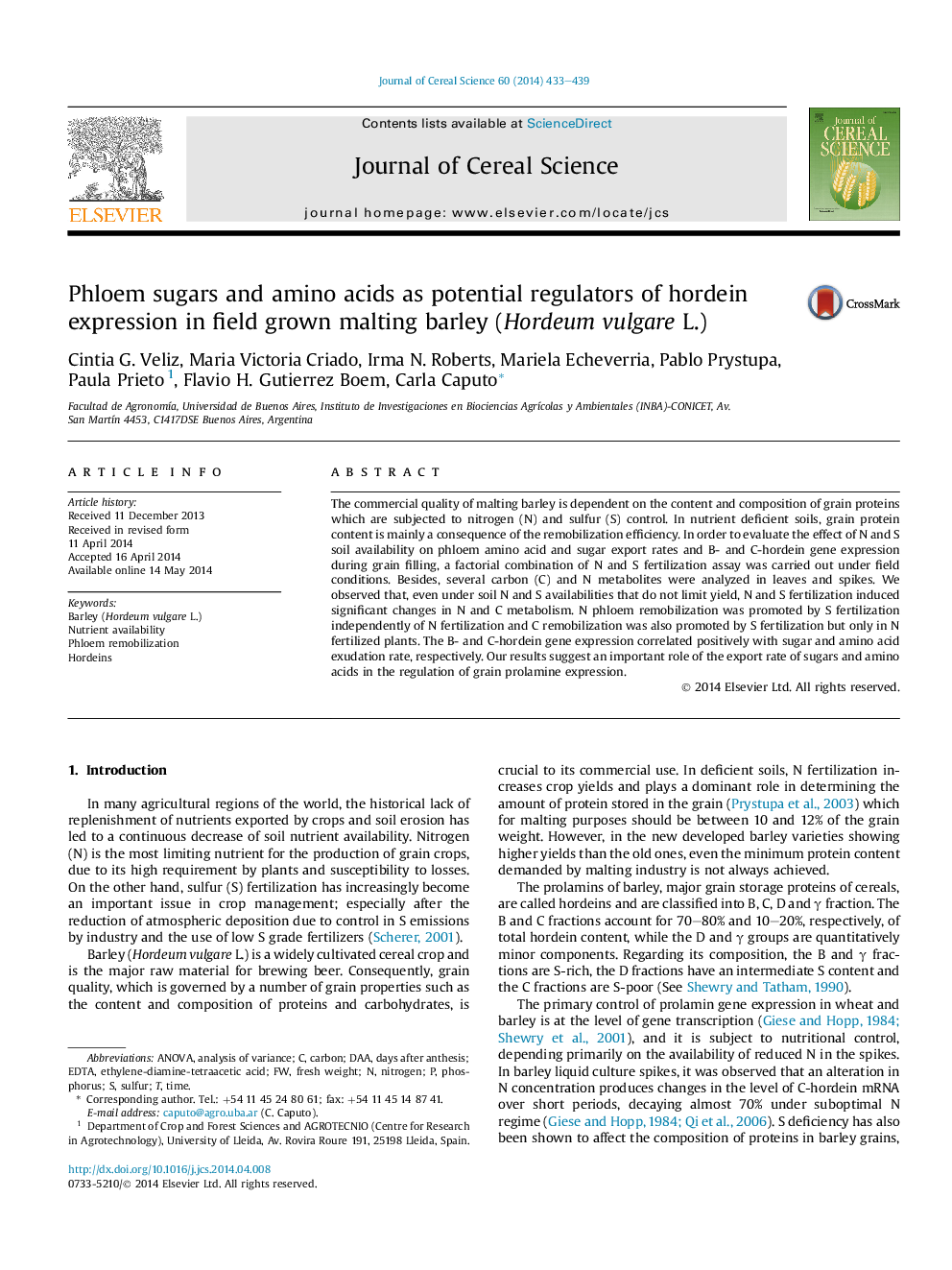| Article ID | Journal | Published Year | Pages | File Type |
|---|---|---|---|---|
| 4515861 | Journal of Cereal Science | 2014 | 7 Pages |
•An N and S fertilization assay in field grown malting barley was carried out.•Phloem amino acid was increased by S fertilization independently of N fertilization.•Phloem sugar was increased by S fertilization only in N fertilized plants.•B- and C-hordein expression correlated with C and N remobilization, respectively.•Remobilized C and N compounds are proposed as regulators of hordein expression.
The commercial quality of malting barley is dependent on the content and composition of grain proteins which are subjected to nitrogen (N) and sulfur (S) control. In nutrient deficient soils, grain protein content is mainly a consequence of the remobilization efficiency. In order to evaluate the effect of N and S soil availability on phloem amino acid and sugar export rates and B- and C-hordein gene expression during grain filling, a factorial combination of N and S fertilization assay was carried out under field conditions. Besides, several carbon (C) and N metabolites were analyzed in leaves and spikes. We observed that, even under soil N and S availabilities that do not limit yield, N and S fertilization induced significant changes in N and C metabolism. N phloem remobilization was promoted by S fertilization independently of N fertilization and C remobilization was also promoted by S fertilization but only in N fertilized plants. The B- and C-hordein gene expression correlated positively with sugar and amino acid exudation rate, respectively. Our results suggest an important role of the export rate of sugars and amino acids in the regulation of grain prolamine expression.
